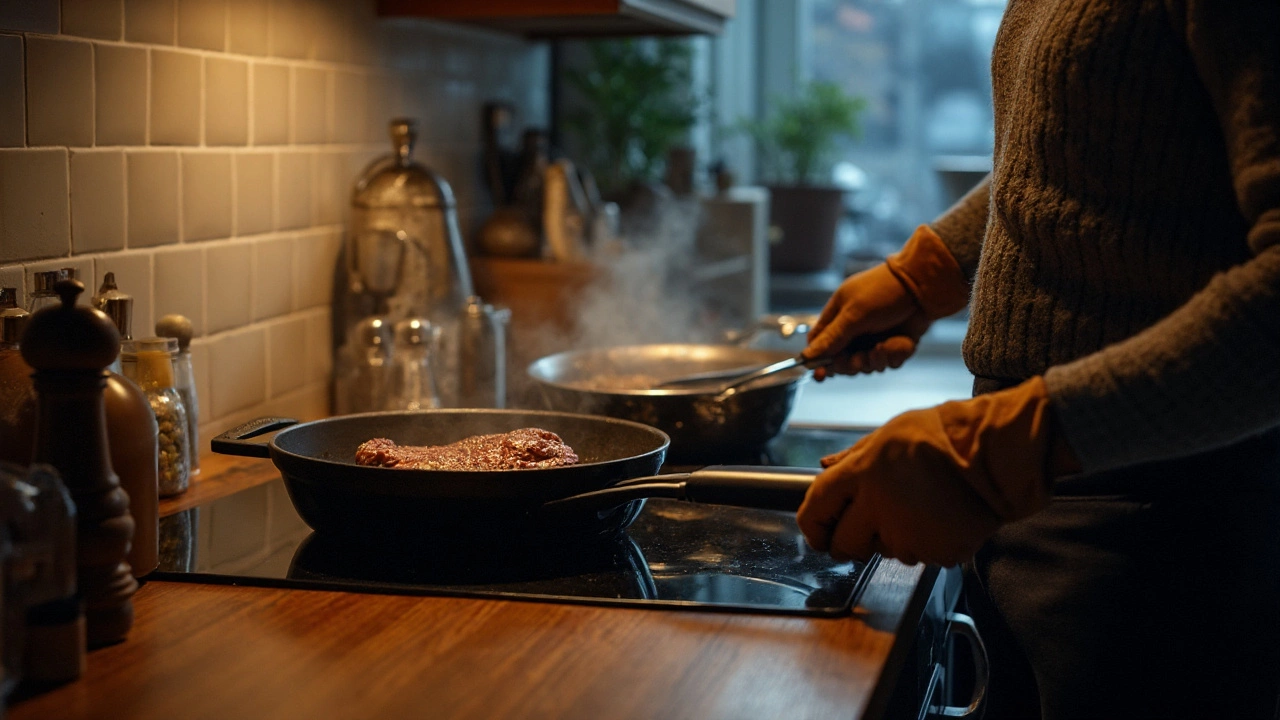Seasoning Cast Iron: Quick Guide to a Perfect Non‑Stick Skillet
Ever notice your cast iron getting sticky or rusty after a few meals? That’s a sign it needs a fresh seasoning. A good seasoning layer creates a natural, food‑safe coating that makes cooking easier and keeps the pan from rusting.
Why Seasoning Matters
Seasoning isn’t just polishing the metal – it’s a chemical process. When you heat oil past its smoke point, the oil breaks down and bonds to the iron, forming a hard, polymerized layer. This layer repels water and food particles, giving you that coveted non‑stick feel without any synthetic chemicals.
Step‑by‑Step Seasoning Process
1. Start clean. Wash the pan with hot, soapy water the first time you season it. Rinse well and dry completely – any moisture will cause steam and ruin the seasoning.
2. Heat the pan. Put the empty skillet on the stove or in a 450°F (230°C) oven for 5‑10 minutes. This opens the pores of the cast iron, making it ready to accept oil.
3. Choose the right oil. Use an oil with a high smoke point – flaxseed, grapeseed, or canola work well. Pour a thin line around the interior, then use a paper towel to spread it evenly. Less is more; you want a barely visible coat.
4. Bake it. Place the pan upside‑down in a preheated oven. Put a foil tray below to catch drips. Bake for 1 hour, then turn the heat off and let the pan cool inside the oven. This slow cool helps the polymerized layer set.
5. Repeat. For a robust finish, repeat the oil‑and‑bake step 2‑3 more times. Each layer builds on the previous one, creating a smoother, darker surface.
6. Maintain after use. After cooking, rinse with hot water, avoid soap if possible, and dry on low heat. Lightly rub a drop of oil on the surface while it’s still warm. This prevents rust and adds to the seasoning.
If food starts sticking, it usually means the seasoning is thin or has been damaged. Scrub the spot with coarse salt and a little oil, then re‑bake the pan using the steps above.
For everyday cooking, avoid acidic foods like tomato sauce for the first few uses. Acid erodes the fresh layer. Once the seasoning is well‑established (after a few weeks of regular use), you can cook anything without worry.
When storing, keep the lid off or place a paper towel inside to let air circulate. A sealed environment traps moisture and can cause rust.
Need a quick touch‑up? Heat the pan, wipe a thin coat of oil, and let it sit on the stovetop for 10‑15 minutes. This “quick season” works for minor spots and keeps the pan ready for the next meal.
Seasoning cast iron isn’t a one‑time chore; it’s part of the pan’s life cycle. With these simple steps, you’ll enjoy a reliable, non‑stick surface that only gets better with each use. Happy cooking!
Cast iron or stainless steel? Clear, evidence-backed guide to pick the right pan for searing, sauces, eggs, and everyday cooking-plus care, safety, and buying tips.
Sep, 5 2025
